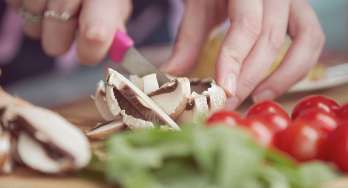


Join thousands of fellow campervan travellers
Sign up for our Britz newsletter to receive inspirational travel content and awesome deals, and we'll send you a copy of our Ultimate RV guide!
Thanks
Please confirm subscription in your email.
Why do people go to Geelong's National Wool Museum?
People visit the National Wool Museum to get a real sense of wool heritage in Geelong and how wool became one of Australia’s defining industries. The exhibits take you through the whole story, from sheep grazing in the paddocks to the finished cloth being traded around the world. One of the highlights is the historic wool machinery demonstrations, such as the working Jacquard loom, which still weaves fabric after more than a century and gives visitors a taste of what life was like in a bustling wool mill.
There are also displays that explain the cultural significance of fibre use among Aboriginal communities, long before the wool boom transformed the landscape. Modern textile art and fashion exhibitions show how wool remains central to Australia’s creative industries today, and families, in particular, will enjoy the chance to get hands-on at the interactive wool exhibits; whether it’s feeling the difference between wool grades, playing with interactive screens, or joining one of the kids’ discovery trails.
How long should I spend at Geelong's National Wool Museum?
Most travellers find that one to two hours is enough to explore the permanent galleries, watch a machinery demonstration, and wander through the temporary exhibitions. If you’re a history enthusiast, a textile fan, or you want to take a guided tour, it’s worth allowing up to three hours. That way, you can move at a slower pace, take in the finer details of the displays, and enjoy the museum without rushing.
How much does it cost to go to the wool museum in Geelong?
Entry is reasonably priced, making it an easy addition to a day in Geelong. Adult tickets are currently $13, while children's tickets are $8. Families can purchase a ticket for $40, which covers two adults and up to four children. Concessions are also available, and younger kids sometimes qualify for free entry, so it’s worth checking the latest ticket details before your visit.
How to get to Geelong's National Wool Museum
From the centre of Geelong, the museum is just a short one kilometre from Geelong Railway Station and the CBD. You can drive it in three to five minutes by following Moorabool Street towards the waterfront, where the museum is located at 26 Moorabool Street.
If you’re coming from Melbourne, it’s an easy journey of around 75 kilometres southwest of the city. The drive takes about one hour and fifteen minutes via the M1/Princes Freeway, with all sealed roads suitable for campervans. Once you reach Geelong, follow the Princes Highway into the city centre, then turn onto Brougham Street and Moorabool Street to reach the museum.
Best time to visit Geelong's National Wool Museum
Because it’s an indoor attraction, the Geelong Wool Museum is a good addition to your Victorian road trip in any season. It’s especially handy on a wet or windy day when outdoor plans are less appealing. For a quieter visit, weekdays outside of school holidays are best, and arriving shortly after the museum opens at 10 am or in the mid-afternoon around 1–2 pm means you’re more likely to avoid larger crowds and school groups.
Weather at Geelong's National Wool Museum
Geelong’s coastal climate is mild year-round, with warm, dry summers and cool, breezy winters. Summer daytime highs usually sit in the mid-20s °C, while winter days average around 12–14 °C. The beauty of the museum is that whatever the weather’s doing outside, it’s always a comfortable stop.
Best place to park your campervan at Geelong's National Wool Museum
Parking at the National Wool Museum in Geelong is straightforward for cars and campervans alike. There are metered spaces along Moorabool Street, Brougham Street, and Eastern Beach Road, all within a short walk of the museum. That said, if you’re in a larger campervan or planning a longer visit, it’s worth heading to the waterfront car parks near Cunningham Pier, which offer more room and are easier to navigate with bigger vehicles.
Road trips that pass through
